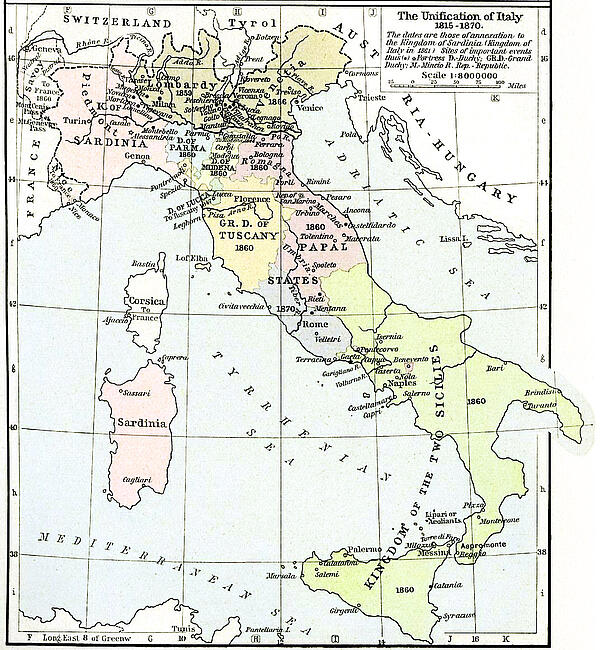Italy in 1900
Italy had little to no national direction by the year 1900, as a result of years of division into numerous states including Venice and the Papal State. As a result, when these states merged under one leader in 1861, Italy was a ‘new’ nation.
Following much division over the years, Italy was made up of several different states including the Papal State, Venice and the Kingdom of the Two Sicilies. However, when the King took leadership over all of the states in 1861, Italy came together as a nation. Ten years later, in 1871, Italy’s capital of Rome was named and the country looked forward to assuming a new, united national identity. It means that, by the year 1900, the country was early in the process of doing this.
States such as Venice were historically wealthy, along with several other parts of the north. As a result of this, and because of its rich soils and fertile land, the north became the main producer and supplier of silk in Europe.

At the other end of the wealth spectrum, the area lying to the south of Rome, known as the Kingdom of the Two Sicilies, had been historically poor thanks to its background as a farming community. Many of the people living in this area were unhealthy as a result of working in the local sulphur mines in Sicily and many children were uneducated.
The unification of the country was hoped to draw these parts of the south out of the poverty they had found themselves enduring. However, this did not happen as planned, with the south continuing to suffer poverty while the north flourished, with new factories opening and the local economy rising. This was due in part to the 1867 opening of the Brenner Pass which allowed a major link from the northern parts of the country to the rest of Western Europe, allowing for far easier trade.
Many did not respect the Italian Government as they had seemingly failed to draw the south out of its poverty. Meanwhile, many were staying loyal to the Roman Catholic Church, which had issued orders to the general public to refuse to vote for the Government due to the loss of land while Italy was unified. This poor relationship with the Church was a disaster for the Italian Government.
Unhappy with how the country was progressing, many Italians moved to other countries, with nine million heading to the US between 1876 and 1926 and a further 7.5 million moving to start new lives in other parts of Europe.
While 1900 was a year of hope for the new, unified country that Italy had recently become, it was not a time of strength for the country and the general public were only too aware of that fact. The Government was not respected and many Italians were living in poverty. The assassination of King Hubert that same year added to the undercurrent of negative feeling brewing in Italy at this time.
See also: Italy and World War One
MLA Citation/Reference
"Italy in 1900". HistoryLearning.com. 2025. Web.
